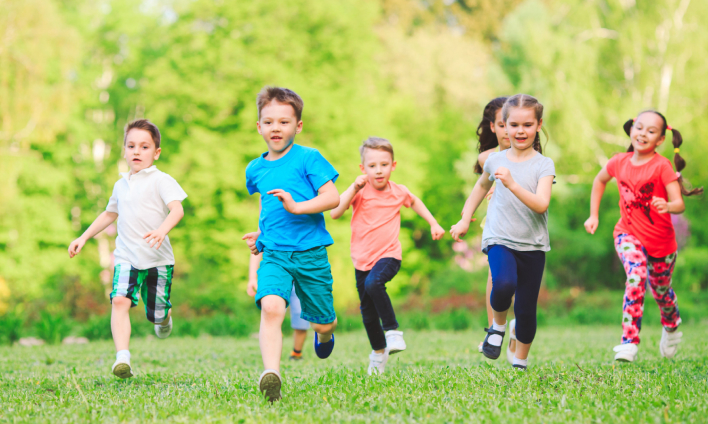Benefits of Swinging for Autistic Children: A Sensory Approach
Autism and swinging go hand in hand when it comes to sensory regulation. Discover how swinging helps calm, focus, and support autistic children.
April 17, 2025
Key Points:
- Swinging supports sensory integration, helping children with autism regulate sensory input and improve body awareness.
- Incorporating swinging into daily routines can enhance motor skills, focus, and emotional regulation in autistic children.
- Swinging can complement ABA therapy by providing natural sensory input that reinforces positive behaviors.
It might just look like playtime, but swinging can be one of the most powerful sensory tools for autistic children. If your child seems calmer, more regulated, or more focused after a good swinging session, there’s real science behind that. Let’s explore why this simple activity matters so much.
Does Swinging Help with Autism?
Yes. Swinging offers powerful sensory benefits for children with autism. It helps improve sensory processing, balance, and coordination. This rhythmic activity can calm the nervous system and support emotional regulation, making it a practical sensory strategy for many families.
What Is the Link Between Autism and Swinging?
If you’ve ever watched a child with autism spend time on a swing, you may notice how focused and at ease they become. The connection between autism and swinging lies in the unique way many autistic children process sensory input. Swinging provides consistent, rhythmic vestibular stimulation—movement that activates the inner ear and supports balance and spatial orientation.
.jpg)
How Does Swinging Support Sensory Integration?
Swinging helps children with autism by engaging multiple sensory systems at once. The vestibular system (balance), proprioceptive system (body awareness), and tactile system (touch) all work together when a child swings. This multi-sensory input can help improve sensory integration over time.
Key sensory benefits of swinging include:
- Vestibular Input: The swinging motion stimulates the inner ear, helping children understand where their body is in space—this can lead to improved balance, coordination, and posture.
- Proprioceptive Feedback: Holding on to ropes or chains, pumping legs, or adjusting posture on the swing provides joint and muscle feedback that enhances body awareness.
- Tactile Stimulation: Touching the seat, ropes, or feeling the wind on their skin during swinging can provide calming or alerting sensory feedback.
When a child engages with a swing, their body receives valuable feedback about movement and position in space. This feedback builds connections in the brain that support more coordinated and regulated responses to everyday sensory input.
Can Swinging Help with Emotional Regulation?
Children with autism often struggle with self-regulation—managing their emotions, energy levels, and behaviors. Swinging helps promote emotional regulation by offering predictable, calming input that resets the sensory system. Over time, this can help reduce meltdowns and improve mood stability.
Emotional and behavioral benefits may include:
- Reduction in anxiety and stress
- Improved transitions between activities
- Decreased frequency of meltdowns
- Greater ability to focus after sensory input
Just like adults may go for a walk to clear their minds, many autistic children instinctively seek out swinging when they need to calm down or re-center. This is a clear sign of self-regulation and a great reason to encourage access to swings at home, school, or therapy settings.
How Can Swinging Improve Focus and Attention?
It might seem counterintuitive, but movement helps the brain prepare for stillness. Swinging is especially helpful for improving focus and sustained attention in children with autism. When the sensory system is regulated, the brain can better direct energy toward learning and engagement.
Here’s how swinging supports better focus:
- Calms the nervous system: When a child feels settled, they are more likely to focus and participate in tasks that require attention.
- Prepares the body for learning: Swinging provides the sensory input needed to "wake up" the brain and body in a safe, controlled way.
- Builds tolerance for seated tasks: After swinging, many children are more willing to sit, listen, and learn with less resistance.
Parents and therapists often use swinging as a sensory “primer” before a task that requires concentration, like reading, therapy sessions, or classroom learning. This small dose of movement can lead to noticeable improvements in attention span.
.jpg)
How Does Swinging Support Motor Skill Development?
Beyond sensory benefits, swinging can build gross motor and fine motor skills—both of which are often areas of need for children with autism. Learning to balance, hold on, shift weight, and adjust position all contribute to physical development.
Key motor skills developed through swinging:
- Core strength and balance
- Grip strength and hand coordination
- Postural control and endurance
- Bilateral coordination (using both sides of the body together)
Children may start by simply sitting in a swing, but as confidence grows, they can begin pumping legs, standing up, or transitioning between different types of swings. Each stage helps strengthen muscle tone, posture, and coordination.
Tips For Using Swinging As Sensory Therapy
While swinging alone isn’t a replacement for occupational therapy or ABA, it is often used as part of a sensory diet—a customized plan of activities designed to meet a child’s sensory needs throughout the day. In this context, swinging becomes a therapeutic tool, helping regulate sensory input and set the tone for other tasks.
Here are some things parents can do when trying swinging as a sensory therapy:
- Start slow and observe how your child reacts. Some may prefer linear swings, while others enjoy spinning or swinging high.
- Watch for signs of overstimulation, such as dizziness, irritability, or sudden fatigue. Swinging should calm and focus—not overwhelm.
- Use it as a tool, not a reward. Sensory input isn’t something a child earns—it's something they need.
Therapists might include swinging as part of a warm-up or sensory break during sessions. Parents can also integrate swinging into their child’s daily routine—before homework, after school, or first thing in the morning.
What Kind of Swing Is Best for Children with Autism?
Not all swings are created equal. Choosing the right swing can make a big difference in how effective the activity is for your child. From indoor therapy swings to backyard setups, the best option will depend on your child’s sensory preferences and developmental needs.
Consider the following when choosing a swing:
- Safety and support: Look for swings with harnesses or enclosed seats for younger children or those with limited motor control.
- Movement type: Some children prefer linear swinging, while others enjoy spinning or multidirectional movement.
- Location and setup: Indoor swings are great for year-round use and can be mounted in doorways or sensory rooms. Outdoor swings offer more space and airflow.
Occupational therapists often recommend platform swings, cuddle swings, or hammock-style swings for children on the autism spectrum. These provide deep pressure and allow for various positions, which can increase sensory input and comfort.
Discover Personalized Support Through ABA Therapy
Swinging isn't just a childhood pastime—it’s a simple, powerful form of sensory regulation that can transform the daily experiences of children with autism. Whether used at home, school, or in therapy, swinging provides the consistent input many autistic kids need to thrive emotionally, physically, and behaviorally.
If you’re exploring ways to better support your child’s sensory and behavioral needs, consider how ABA therapy can complement sensory tools like swinging. At Astra ABA, we offer customized ABA therapy in North Carolina and Indiana, designed to meet your child where they are and help them reach their full potential.
Learn more about how ABA therapy can support your family. Reach out to us today!
Related Content
Liked this article? Check out these related posts to learn even more!






Ready to start your journey with ASTRA ABA?
Contact us today for a consultation and let us be a part of your child's path to success.






.jpg)

.png)





